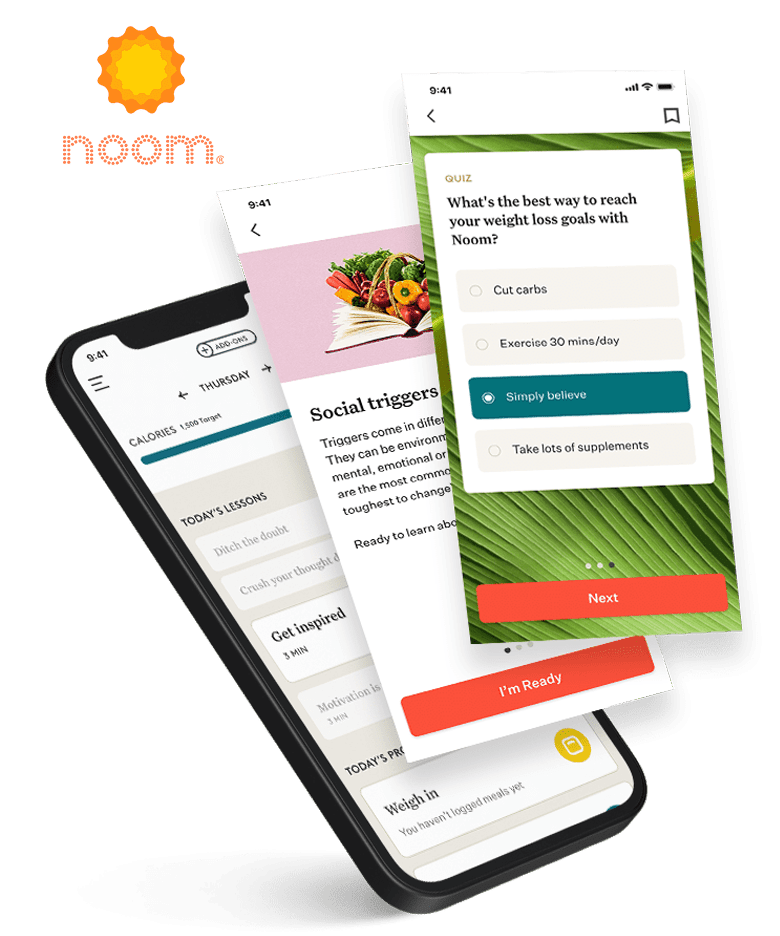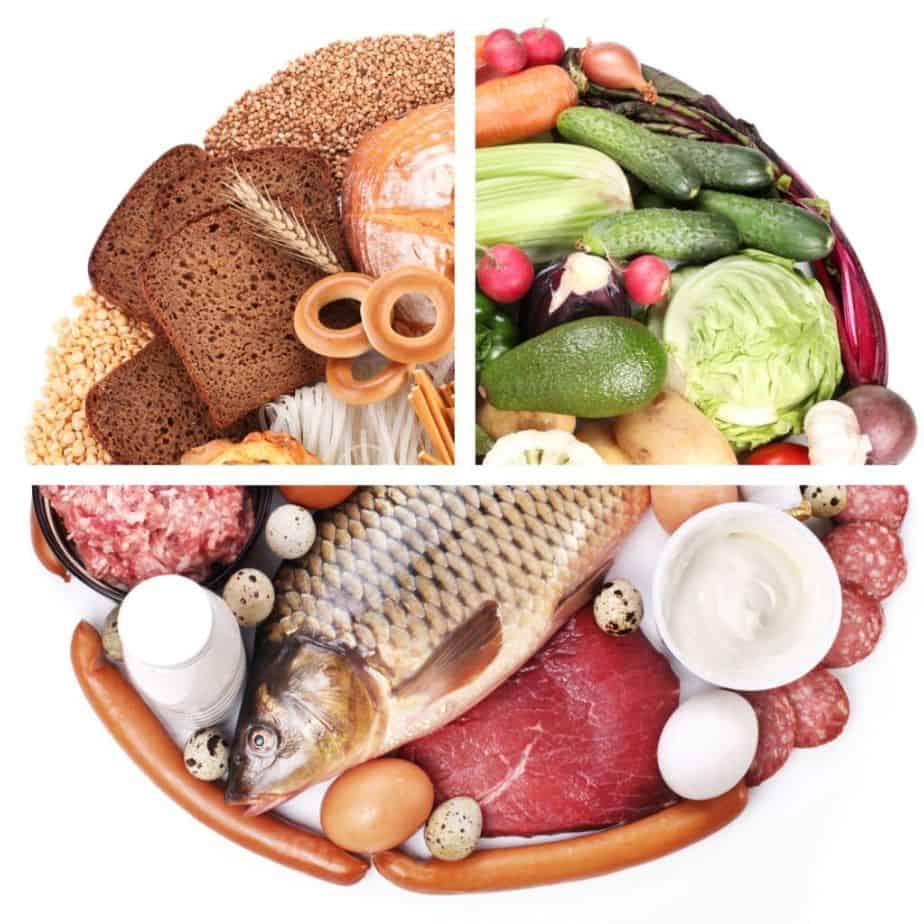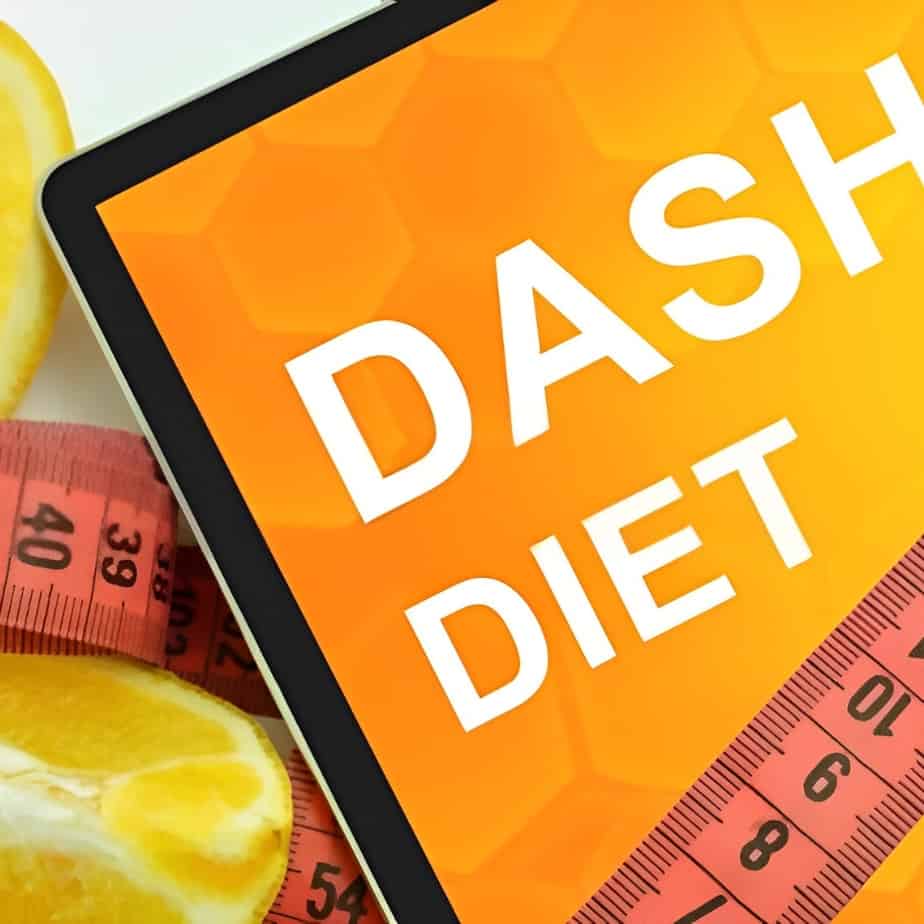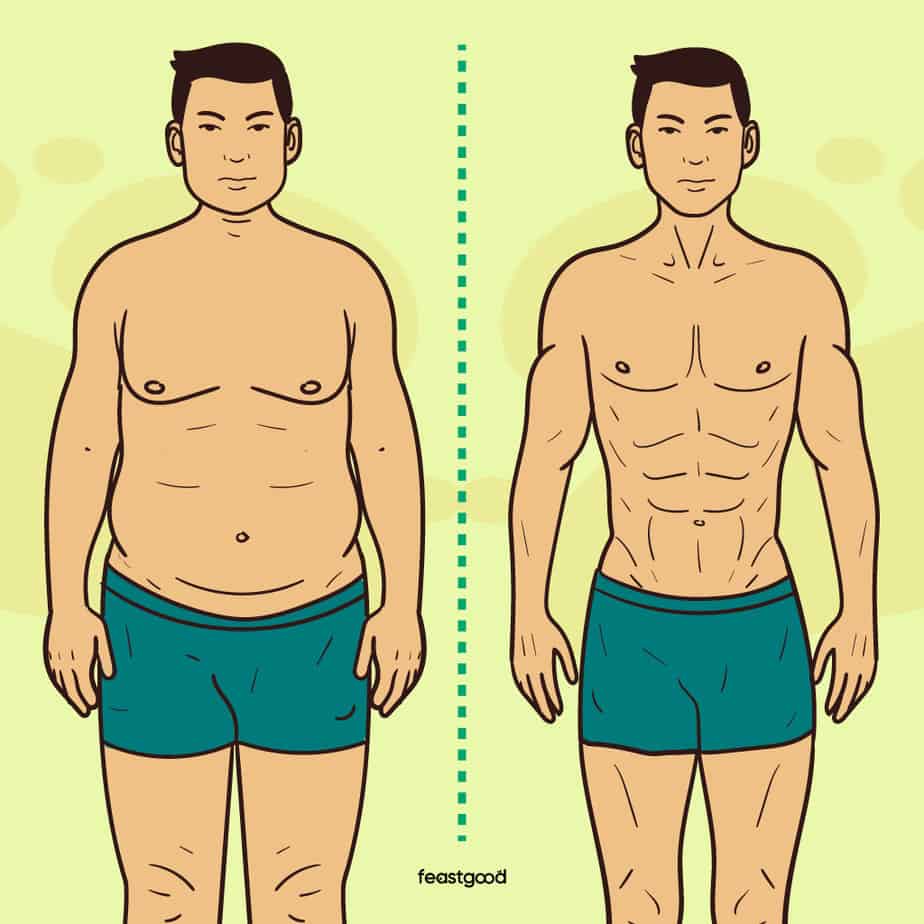If you’ve decided that now is the time to lose weight and/or eat better to improve your health, then you’re not going to want to waste your time trying diets that don’t work or aren’t even good for you.
So, what are the 3 best diets for both weight loss AND overall health?
The three best diets for weight loss and overall health are:
- Noom
- Macro-counting
- DASH Eating Plan
None of these diets require specialty branded foods or supplements, and each of them encourages a balance of foods and nutrients rather than strictly focusing on calorie counting.
Key Takeaways
- There is no one “best diet” for everyone; the best diet for you will depend on what feels the most sustainable based on your preferences and budget.
- Fad diets that require you to purchase specialty foods or supplements or cut out entire food groups should be avoided because they are not long-term solutions.
- You can use a combination of strategies (macro tracking, food quality, and behavioral psychology) to find the diet approach that best fits your lifestyle.
How To Choose The Best Diet For You
To help you find the best diet to suit your needs, consider the following factors:
Review Your Preferences
You’re going to want to take into consideration what foods you already like and don’t like, as well as any allergies, as this will help determine which diet will be the easiest to stick to.
You’re not going to want to choose a diet plan that excludes all of the foods that you like, or one that requires you to eat things that you have allergies or intolerances to because that would be setting yourself up for failure.
For example, if you hate seafood, it doesn’t make much sense to follow a diet that requires you to eat fish several times per week (pescetarianism). And, if you love cookies, it doesn’t make sense to follow a diet that requires you to cut them out entirely (keto).
Consider The Costs
Next, you’ll have to consider whether there is a cost associated with the diet and whether that fits into your budget.
- Does the diet require you to work with a paid coach or leader to guide you through it?
- Do you need to buy any branded foods specific to the diet, or special supplements?
Once you’ve figured out the total cost of the diet, you can decide if it is a worthwhile investment that fits your budget.
Also, some of these costs (like branded foods or supplements) can be red flags that the diet doesn’t really have your best interests in mind (see my comments about red flags, next).
Watch Out For Red Flags
Finally, consider any red flags about the diet that suggest it is not sustainable and/or healthy.
- Are you being asked to drastically slash calories?
- Do you have to cut out entire food groups or types of macronutrients?
- Are you being asked to recruit others to follow the diet and/or buy products in order to receive a reduced rate for the program?
If the answer to one or more of these questions is yes, then you should be very skeptical about the diet’s effectiveness and motives. I recommend you look for other options with more green flags.
Some “green flags” (aka the opposite of red flags: signs a diet IS a good idea to proceed with) include:
Provides An Appropriate Amount of Food To Give You Energy For Your Day
Sustainable diets are not starvation diets and should create only a modest calorie deficit (no more than 10-20% below your maintenance intake).
Whether counting calories is an explicit part of the diet or not (behind the scenes, all diets “work” for weight loss by reducing the number of calories you eat relative to the number of calories you burn).
Includes All Foods In Moderation
The best diets don’t ask you to cut out certain foods or types of foods, unless medically necessary (like avoiding peanuts if you have an allergy, or gluten if you have Celiac disease).
Respects your cultural heritage
If a certain food is a staple part of the cuisine that represents your cultural and/or ethnic heritage, a good diet for you won’t ask you to give that up.
For example, if rice or corn is an important part of your food culture, the Paleo diet is not a good choice because it does not allow rice or corn.
If these factors are in place, consider your green light to get going with the diet.
Diet #1: Noom

What It Is
Noom isn’t exactly a diet per se, but rather a psychology-based nutrition coaching program that educates users about their habits and food choices.
The program encourages users to make more food choices that are good for their health (“green” foods) and to limit food choices that make it harder to reach their goals (“red” or “orange” foods).
Our team of Registered Dieticians and nutrition coaches have looked at dozens of weight loss-based nutrition and fitness tracking apps, and we consider Noom to be the best nutrition app on the market for weight loss (click to read our review).
How It Works
Noom encourages users to log the foods they’re eating in their daily food log and uses this information to help keep them on track with their suggested calorie range.
It calculates this calorie range based on the information you provide during the sign-up process, such as your age, weight, height, sex, activity level, and goals.
Noom also places a ton of emphasis on education, so that users feel more confident in their knowledge of nutrition and behavior change.
Noom provides two main forms of education:
1. Food Quality
Noom’s color coding system categorizes foods that have the lowest calorie density as “green foods”, encouraging you to eat lots of them (fresh vegetables and fruits make up most of this category).
Moderate calorie density foods are “yellow foods” (such as lean protein and whole grains), and finally “orange/red foods” have the highest calorie density and/or contain few nutrients, such as highly processed foods that should be eaten sparingly.
This “traffic light” system helps people to learn what foods they should eat more often, and what foods they should eat less often.
By prioritizing foods with low-calorie density, and limiting foods with high-calorie density, Noom naturally encourages users to achieve a calorie deficit (eating fewer calories than it takes to maintain weight) for weight loss.
2. Behavioral Psychology
Noom also provides optional daily lessons in nutrition and behavioral psychology, to help users learn about why they may have adopted certain unhealthy behaviors in the past, or gravitate to less healthy food choices, and how to make better choices in the future.
These lessons make it more likely that people will identify the behavior patterns that are no longer serving them, and change the behaviors and thought processes that led to them being overweight in the first place.
Pros & Cons Of Noom
Pros
- Daily lessons: the benefits of daily lessons are two-fold: they provide users with education about how to make better choices and they provide a sense of accomplishment and ownership when they are checked off each day, keeping users engaged with the process and feeling like they are “doing something” productive in pursuit of their goals.
- Minimum calories: unlike some calorie and macro-tracking apps on the market that can calculate or allow absurdly low-calorie intakes for weight loss, Noom sets a minimum intake of 1,200 calories for women and 1,400 calories for men.
This at least prevents dangerous crash diets (but may still be too low for sustainable weight loss for many people).
- Step goal: setting a step goal in Noom recognizes the value of “NEAT” (non-exercise activity thermogenesis), aka the calories you burn from daily activities that aren’t dedicated workouts, but still contribute to your overall energy expenditure and contribute to overall health and well-being.
Adding steps increases the calorie target, so it encourages users to move more to eat more.
Cons
- Broad calorie range: Noom’s suggested calorie range can be 1,000 calories or more, which can lead to an unreasonably large calorie deficit for users following the lower end of the range.
- No macronutrient split: Noom’s sole focus on calories is a missed opportunity to educate users about the macronutrients (protein, carbs, and fat) that provide those calories, the role that each macronutrient plays, and the importance of getting a balanced intake of all three.
- Adding calories burned: Noom increases users’ daily calorie targets by the number of calories estimated to be burned through activities, which can make it harder to achieve a calorie deficit if users “eat back” the calories burned through exercise.
Tips For Implementing The Diet
Noom doesn’t have a free version, so to get going, you can try a 2-week trial for $1.
To get the most out of the experience, it’s important to complete the daily lessons and answer any coaching questions seriously, after putting some thought into it.
Then, log all of your food and beverage choices daily to see which choices are “green” and which choices are “orange/red.” This will give you a sense of what foods to prioritize to help with weight loss, and which foods to eat less often.
Who Should And Shouldn’t Do It
Noom is a great choice for individuals who want to learn more about the psychology behind their food choices, how different types of food can make it harder or easier to achieve goals, how to establish healthy habits, and how to improve their relationship with food.
Noom makes it hard to see the actual macronutrient breakdown of foods, so it’s not a good choice for people who have specific macronutrient goals and ratios, such as athletes or competitive bodybuilders.
Finally, Noom is fairly pricey, so it’s not the right choice for users with a tight budget.
The Science Behind It
As I mentioned, Noom has daily lessons about nutrition and behavioral psychology to help users better understand their food choices, and to increase awareness and take more control of their choices so that they can meet their goals.
By getting users to eat more foods that have low-calorie density, and to limit foods that have high-calorie density, Noom will result in a lower calorie intake, creating a calorie deficit necessary for weight loss.
Diet #2: Macro Tracking

What It Is
Macro tracking isn’t exactly a diet, but rather an approach to nutrition that focuses on the three main macronutrients (protein, carbohydrates, and fat), that can be tailored accordingly based on your goal (i.e. weight loss).
I recommend starting with the following guide that we’ve put together if you’re new to macro tracking:
When it comes to weight loss and overall health, tracking macros is superior to counting calories because it encourages a balanced intake that supports the preservation of lean muscle mass and ensures a good range of micronutrients to promote overall health.
To start tracking your macros, you’ll need to log your food in a macro-tracking app.
There are several macro-tracking apps on the market right now, but after testing 18 different ones, our team considers MacroFactor to be the best (click to read our review).
How It Works
Since macronutrients provide calories, tracking macronutrients indirectly tracks calories, too.
Users still need to determine a calorie intake for weight loss, but then they go a step further by determining how many of those calories will come from protein, how many from fat, and how many from carbohydrates.
Users can either calculate these percentages themselves or rely on suggested targets from a macro-tracking app.
Then, they log all of their food and beverages each day and try to get as close as they can to the target number of grams of protein, carbs, and fat.
Pros & Cons
Pros
- Includes all foods: macro tracking can reduce the stigma around certain foods that other diets label as “bad” because as long as you are hitting your macro targets, you can include any foods you want.
This helps to reduce the risk of “orthorexia” (an obsession with eating only “good” or “clean” foods).
- Encourages balanced intake: macro tracking ensures individuals are getting sufficient protein to support lean muscle mass, dietary fat for cognitive and hormonal health, and carbs to supply the body with its preferred energy source.
- Reduces calorie obsession: macro tracking can help users detach from an obsession with calories, especially by pointing out that just because a food has fewer calories, does not necessarily mean that it’s better.
With macro tracking, it’s just as important to avoid under-shooting your targets as it is to avoid over-shooting your targets.
Cons
- No focus on food quality: pure macro tracking does not consider the source of the macros; it treats carbs from donuts the same as carbs from apples, even though apples will have more water content, fiber, and beneficial micronutrients (vitamins and minerals).
Getting all macros from highly processed foods can lead to micronutrient deficiencies.
- Promotes rigidity: having exact “to the gram” targets can perpetuate unhelpful ideas that users need to hit their targets perfectly or else they have “failed” and will not make progress, which can perpetuate an “all-or-nothing” mindset.
Tips For Implementing The Diet
The best way to get going with tracking macros is to pick a macro-counting app like MacroFactor, which you can try for 2 weeks free when you enter the code FEASTGOOD when signing up.
Use our calorie calculator for your starting calories, and then follow our general guidelines to determine the macronutrient split: 30% of calories from protein, 40% from carbs, and 30% from fat.
For example, if your suggested intake for weight loss is 1,800 calories, this is 135 grams of protein (135 grams x 4 calories per gram = 540 calories), 180 grams of carbs (180 grams x 4 calories per gram = 720 calories) and 60 grams of fat (60 grams x 9 calories per gram = 540 calories).
Input the requested information at sign-up, but then override the suggested calories and macronutrient targets that the app recommends (which typically are not as accurate) and set your own targets based on your calculations.
With your targets set, log all of your food and beverages for at least a week, and compare your results to your expectations.
Then you can adjust your targets up or down as needed if you are losing weight too quickly, or not fast enough. Keep in mind that a healthy, sustainable rate of weight loss is no more than 0.5-1% of starting weight per week.
Who Should And Shouldn’t Do It
Macro tracking is a great choice for people who love data and want to get more analytical with their nutrition intake.
It can be a great way to learn about what foods provide what nutrients, in what amounts, and what portion sizes and combinations of foods are appropriate for different goals.
I think macro tracking also goes a long way in showing people how to create a balanced meal, and how to incorporate moderate portions of highly processed foods into their diets while still achieving their goals.
For these reasons, macro tracking is great for those who want to learn more about nutrition and for intermediate/advanced athletes and bodybuilders.
However, I wouldn’t recommend macro tracking to people with a history of disordered eating or compulsive behaviors around food because tracking macros can be triggering for these individuals and lead to even more anxiety and obsession with food.
The Science Behind It
Macronutrients are the source of dietary calories, so tracking macronutrients indirectly track calories, as well.
Assuming the macronutrient targets are based on a calorie intake that is less than the total number of calories a person burns each day (called Total Daily Energy Expenditure, or TDEE), then hitting those macronutrient targets will result in a calorie deficit that allows for weight loss.
Diet #3: DASH Diet

What It Is
The DASH diet (“Dietary Approaches to Stop Hypertension”) is “a flexible and balanced eating plan that helps create a heart-healthy eating style for life”.
Based on this description, I wouldn’t necessarily classify it as a “diet,” but rather an “eating plan”; however, it was voted the #2 Best Diet Overall in 2023 by U.S. News.
The DASH eating plan is also clearly defined to be used long term, since it says “for life”, which means that the plan is intended to be sustainable.
The plan was developed by researchers to promote heart health by reducing blood pressure and lowering LDL cholesterol.
How It Works
The DASH Eating Plan includes the following recommendations:
- Eat vegetables, fruits, and whole grains
- Include fat-free or low-fat dairy products, fish, poultry, beans, nuts, and vegetable oils
- Limit foods that are high in saturated fat, such as fatty meats, full-fat dairy products, and tropical oils such as coconut, palm kernel, and palm oils
- Limit sugar-sweetened beverages and sweets
As you can see, the foods it recommends you consume are consistent with the foods that Noom has in its green category, and the foods it suggests you limit are consistent with the foods that Noom has in its orange/red category.
Pros & Cons
Pros
- Emphasis on minimally processed whole foods: minimally processed whole foods have more micronutrients than their processed counterparts, and they also tend to have a higher water & fiber content, making them more filling.
These two elements make these foods more satisfying, which can naturally reduce overeating and help with achieving and maintaining a healthy weight.
- Long-term focus: this eating plan is meant to set a pattern of eating for life, rather than being a short-term approach to quickly drop pounds.
- Emphasis on health, not weight: the DASH eating plan is primarily about achieving good health, rather than having its followers hyper-fixated on their weight. This is ideal because you can weigh less and still be incredibly unhealthy.
Cons
- No focus on weight loss: there is no guarantee that following the DASH Eating Plan will result in weight loss since it’s possible to maintain or even gain weight while eating the recommended foods if there is no mechanism for calorie control.
Healthy eating doesn’t automatically lead to weight loss because weight loss is achieved through a calorie deficit.
- No guidance on how to incorporate “sweets” and other processed foods in a balanced way: the DASH eating plan may perpetuate “all-or-nothing” thinking or orthorexia if its followers feel like they are totally “off plan” for eating one cookie.
Unlike Noom and macro tracking, the DASH plan doesn’t encourage you to find a balance between nutrient-dense and non-nutrient-dense foods.
Tips For Implementing The Diet
The best way to get started with the DASH Eating Plan is to begin by stocking your kitchen with the recommended foods and clearing out the foods in the “limit” categories.
Plan a grocery trip to buy lots of fruits, vegetables, whole grains, legumes, and lean sources of meat. Start by incorporating these foods into one or more of your daily meals.
Give away, donate, or trash sugar-sweetened beverages and sweets to reduce the likelihood that you’ll eat them.
Who Should And Shouldn’t Do It
The DASH Eating Plan is a great choice for people with health concerns such as high blood pressure or high cholesterol.
However, I always recommend discussing any dietary changes with your doctor or other primary health care provider first.
The foods in the DASH Eating Plan can also be incorporated into Noom or macro tracking.
Noom will allow you to explore why you may or may not have gravitated to these types of foods in the past, and why you might feel resistance to giving up foods in the “limit” category, or have a hard time embracing the foods in the recommended category.
Macro tracking can show you how the various foods in the DASH Eating Plan contribute to various macronutrient targets, and teach you how you can include foods in the “limit” category in moderation while achieving your overall goals.
Some of the recommended foods in the DASH Eating Plan are not appropriate for people who suffer from Irritable Bowel Syndrome (IBS), or people who have been advised to follow a low FODMAP diet.
The Science Behind It
Each of the DASH recommendations lines up with research on foods to include and foods to limit/exclude to reduce the risk of cardiovascular disease.
“Functional foods” with a cardioprotective effect include vegetables and fruit, nuts and seeds, and whole grains.
The foods to limit match guidelines from the American Heart Association about reducing intake of saturated fat: animal fat, sugar, and alcohol top this list.
Without explicitly focusing on weight loss, a dietary pattern that gets most (>80%) of its calories from minimally processed whole foods can naturally lead to achieving and maintaining a healthy body weight.
However, the DASH eating plan won’t necessarily lead to weight loss if you’re eating more calories than you need to lose weight.
Wrapping Up: Before You Start Any Diet, Consider These 3 Things
- Are they trying to sell you something? Special supplements or foods? If you must purchase branded supplements, foods, or books/guides, they are selling you a product more than a sustainable way of eating.
- Does it eliminate certain foods or entire food groups? Unless you personally have a medically necessary reason to do so, such as an allergy, this type of diet can be imbalanced, and promote disordered eating.
- Can you see yourself doing it in a year? If the answer is no, any results you get are likely to be short-term and unsustainable.
Once a diet or eating plan has passed these three tests, try it out for at least 4-6 weeks and see what you like and don’t like about it. Then you can fine-tune your approach to come up with a uniquely tailored solution just for you.
Our team of Registered Dieticians & Nutrition Coaches is also available to lend a helping hand – feel free to book a complimentary consultation with us to discuss your goals.
About The Author

Lauren Graham is a Precision Nutrition Level 1 certified nutrition coach. She focuses on helping busy professionals balance healthy eating and purposeful movement. Lauren has a background in competitive swimming and is currently competing as a CrossFit athlete. She has a passion for training, teaching, and writing.
Why Trust Our Content

On Staff at FeastGood.com, we have Registered Dietitians, coaches with PhDs in Human Nutrition, and internationally ranked athletes who contribute to our editorial process. This includes research, writing, editing, fact-checking, and product testing/reviews. At a bare minimum, all authors must be certified nutrition coaches by either the National Academy of Sports Medicine, International Sport Sciences Association, or Precision Nutrition. Learn more about our team here.
Have a Question?
If you have any questions or feedback about what you’ve read, you can reach out to us at [email protected]. We respond to every email within 1 business day.
